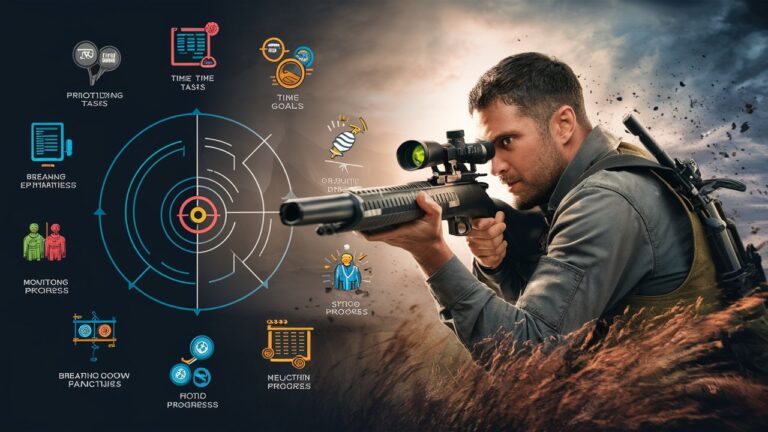Introduction
In today’s fast-paced world, the ability to “target fast” has become a critical skill for personal and professional success. Whether you’re launching a product, pursuing a career milestone, or striving to improve your daily productivity, speed and precision in goal-setting can make the difference between stagnation and achievement. But what does it truly mean to “target fast,” and how can you ensure your efforts yield meaningful results? This article explores actionable strategies, tools, and mindsets to help you refine your targeting process, avoid common pitfalls, and accelerate your path to success. From defining objectives to leveraging technology, we’ll break down the essentials of efficient goal achievement.
1. Understanding the Concept of “Fast Targeting”
“Fast targeting” refers to the practice of identifying, prioritizing, and acting on goals with speed and accuracy. Unlike traditional goal-setting, which often involves lengthy planning phases, fast targeting emphasizes agility, adaptability, and real-time adjustments. This approach is particularly valuable in dynamic environments where delays can lead to missed opportunities. For example, businesses targeting fast-changing consumer trends or individuals aiming to capitalize on time-sensitive opportunities (e.g., job openings or investments) benefit from this method. Key elements include clarity of purpose, data-driven decision-making, and the ability to pivot when circumstances evolve.
2. The Importance of Speed in Goal Achievement
Speed is no longer just a competitive advantage—it’s a necessity. In business, slow decision-making can result in lost market share, while in personal development, procrastination often leads to unfulfilled potential. However, speed must be balanced with precision. Rapid targeting without a clear strategy risks wasted effort. To strike this balance, focus on informed urgency: using relevant data and insights to act swiftly. For instance, companies like Amazon thrive by combining rapid delivery systems with robust customer analytics, ensuring speed doesn’t compromise quality. Similarly, individuals can use tools like time-blocking or the Eisenhower Matrix to prioritize tasks that align with their long-term vision.
3. Key Strategies for Effective Fast Targeting
To master fast targeting, adopt the following strategies:
- Set SMART Goals Quickly: Define Specific, Measurable, Achievable, Relevant, and Time-bound objectives without overcomplicating the process. Use templates or apps to streamline goal-setting.
- Prioritize Ruthlessly: Not all goals deserve equal attention. Apply the 80/20 rule (Pareto Principle) to focus on the 20% of tasks that drive 80% of results.
- Leverage Agile Methodologies: Break large goals into smaller, actionable “sprints” to maintain momentum and adapt quickly.
- Automate Repetitive Tasks: Use automation tools (e.g., Zapier, AI schedulers) to free up time for high-value activities.
- Develop a Bias for Action: Cultivate a mindset that values progress over perfection. Test ideas quickly, gather feedback, and iterate.
4. Tools and Technologies to Accelerate Targeting
Modern tools can supercharge your targeting process:
- Project Management Software: Platforms like Asana or Trello help organize tasks, set deadlines, and track progress in real time.
- Data Analytics Tools: Google Analytics, Tableau, or even Excel enable data-driven decisions by identifying trends and opportunities.
- AI-Powered Solutions: ChatGPT for brainstorming, predictive analytics for forecasting, and CRM systems like Salesforce for customer targeting.
- Communication Platforms: Slack or Microsoft Teams reduce delays by facilitating instant collaboration.
For example, a marketing team using AI-driven analytics can quickly identify high-performing ad campaigns and reallocate budgets within hours, not weeks.

5. Common Challenges in Fast Targeting and How to Overcome Them
Even with the best strategies, obstacles arise:
- Burnout from Constant Speed: Rapid targeting can lead to exhaustion. Solution: Schedule regular breaks and practice mindfulness to sustain energy.
- Overwhelm from Too Many Goals: Narrow your focus using the “One Thing” principle—identify the single task that makes other tasks easier.
- Fear of Failure: Speed requires risk-taking. Reframe failures as learning opportunities.
- Resource Limitations: Optimize existing resources through collaboration or outsourcing non-core tasks.
6. Case Studies: Successful Fast Targeting in Action
- Tech Startups: Companies like Uber targeted fast-growing urban mobility needs by rapidly scaling their app and adapting to local regulations.
- E-Commerce Brands: Fashion retailers like Shein use real-time customer data to adjust inventory and marketing strategies weekly.
- Personal Development: Athletes like Serena Williams use rapid feedback loops (coach reviews, performance analytics) to refine techniques between matches.
Conclusion
Mastering the art of fast targeting isn’t about rushing blindly—it’s about combining strategic clarity with agile execution. By setting SMART goals, leveraging technology, and embracing adaptability, you can achieve your objectives faster without sacrificing quality. Remember, speed and precision are not mutually exclusive; they’re the twin engines of modern success. Start small, iterate often, and watch your productivity soar.
Frequently Asked Questions (FAQs)
Q1: How do I balance speed with quality when targeting goals?
A: Focus on “minimum viable progress”—achieve the smallest meaningful result quickly, then refine. Use feedback loops to improve iteratively.
Q2: What tools are best for fast-tracking personal goals?
A: Apps like Notion for planning, RescueTime for productivity tracking, and Habitica for gamified habit-building.
Q3: How can I overcome resistance to rapid change in a team?
A: Communicate the benefits clearly, involve stakeholders early, and celebrate quick wins to build momentum.
Q4: Is fast targeting suitable for long-term goals?
A: Absolutely. Break long-term goals into short-term milestones (e.g., quarterly targets) and adjust based on progress.
Q5: What’s the biggest mistake people make when trying to “target fast”?
A: Neglecting reflection. Regularly review outcomes to avoid repeating errors and refine your approach.
This comprehensive guide equips you to act decisively, adapt fluidly, and achieve more in less time. Start targeting fast—your goals won’t wait!
